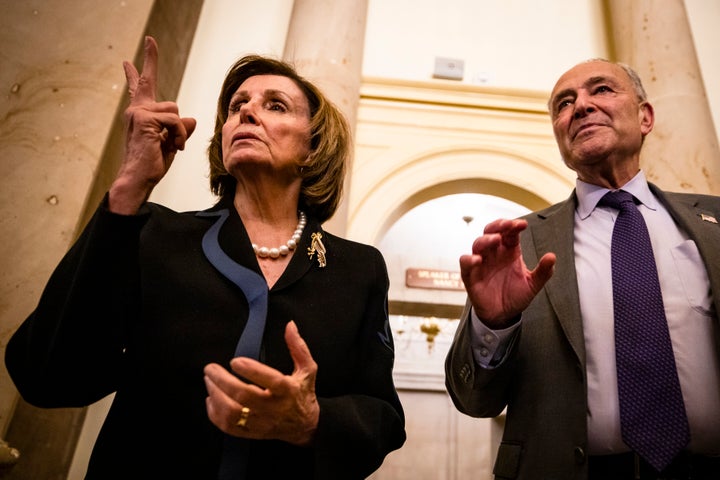
Health care policy has not been the kind of preoccupation it was during the first year of the last two Democratic presidencies. That is very much intentional.
Nobody in this White House wants a brutal, protracted fight over health policy with so many other urgent items on the agenda. Almost nobody on Capitol Hill wants one either.
But President Joe Biden and his allies in Congress understand there is still a lot of unmet need out there, even with the Affordable Care Act fully in place. And they have some ambitious ideas for addressing those needs.
The problem, as always, is funding. Every big idea comes with a big price tag, and somehow it all has to fit into a giant spending bill that includes the rest of the Democratic agenda and can still get through Congress.
Democratic leaders have tentatively settled on a package of $3.5 trillion in spending over the next 10 years, which is both a lot of money and still not enough to do everything Democrats want. They’ll have to downsize some ideas, one way or another, and maybe jettison some altogether.
Just what this means for the health care agenda is impossible to say yet, because the ongoing discussions on and off Capitol Hill are so fluid ― and because they involve so many unknowns, like how the Congressional Budget Office decides to “score” specific initiatives, or how much Democrats are determined that new health care spending be offset by savings from other, existing health care programs.
But a few things are clear already ― like which initiatives are getting serious attention, who is promoting them and what political obstacles they face. What follows is a rough summary, based on conversations with more than a dozen participants in deliberations, including officials, advocates and outside experts.
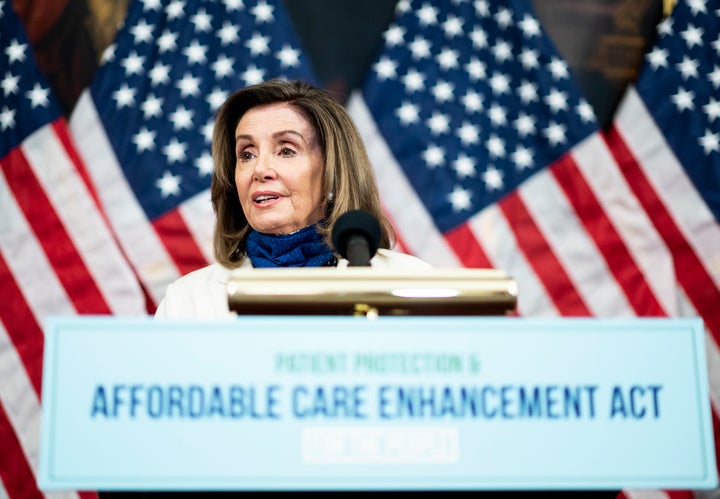
Improving Obamacare
What’s the need? Millions of middle-income Americans buying private insurance through “Obamacare” ― that is, through HealthCare.gov and state-run exchanges like Covered California ― have historically qualified for minimal financial assistance and, as a result, struggled with premiums, copays and deductibles.
What’s the policy? The COVID-19 relief bill offered extra financial assistance, and it already seems to be boosting enrollment. But it’s a temporary measure that expires after next year. Democrats want to make that boost permanent, while shoring up the program’s financial health with some other changes.
What could it cost? Approaching $200 billion, maybe exceeding a bit, depending on details.
Who’s pushing for it? Everybody, but especially House Speaker Nancy Pelosi (D-Calif.). She sees the Affordable Care Act as her legacy and sees these improvements as restoring the program to what she originally hoped it would be, before compromises necessary to get it through Congress in 2010.
What could happen? This feels like the surest bet on the list, because it’s got widespread support and no serious opposition. Besides, the last thing Democrats want is to have the temporary assistance expire without a replacement, hitting several million Americans with premium spikes right before the 2022 midterms.
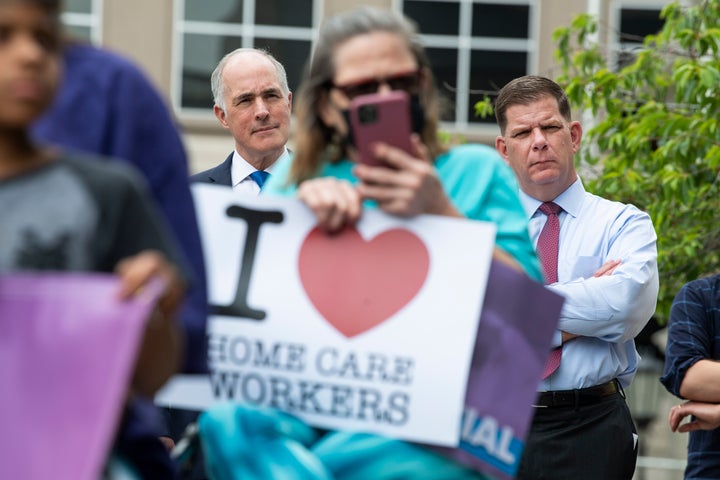
Bolstering Home Care And Community Supports
What’s the need? A personal care attendant to help with cooking and hygiene. An agency to secure housing or a job. These “home and community-based services” can allow many senior citizens and people with disabilities to stay out of nursing homes and other large institutions. But government funds for them are limited.
What’s the policy? Democrats want a dramatic increase in funding, ideally enough to wipe out waiting lists that have hundreds of thousands of people on them. They also want to improve the quality of services, partly by raising wages for famously underpaid caregivers.
What could it cost? Biden in his budget requested $400 billion, a number that advocates embraced and cheered.
Who’s pushing for it? Rep. Debbie Dingell (D-Mich.) and Sen. Bob Casey (D-Pa.) are leading the charge in Congress, but it wouldn’t have gotten this far without outside advocates, especially the powerful Service Employees International Union.
What could happen? Democratic leaders have discussed scaling down the initiative significantly from the $400 billion ask. Given the pressure on every initiative, at least some reduction seems likely, though SEIU and its allies will fight for every dollar, and they have a lot of leverage.
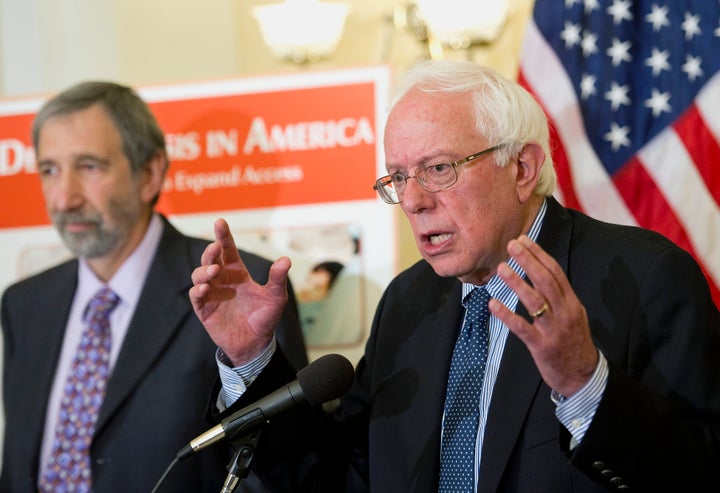
Adding Benefits To Medicare
What’s the need? Medicare has some big gaps in its coverage. Among them is a lack of coverage for dental, vision and hearing.
Many seniors buy supplemental policies that cover some portion of these bills, or enroll in private “Medicare Advantage” plans that offer them as part of a full, private-sector alternative to the traditional program. But many seniors don’t have these supplements, which means they pay out of pocket ― or simply go without the services they need.
What’s the plan? Add some combination of dental, vision and hearing to Medicare ― and, if possible, add an overall cap on out-of-pocket expenses, which is something else private insurance now typically offers but Medicare doesn’t.
What could it cost? This is really hard to peg, because there are so many moving pieces. Does a reform include dental, vision and hearing, or just one or two? What does the benefit design look like and how much, if at all, would seniors have to pay on their own? But it’s not hard to imagine the full package hitting $400 billion over 10 years.
Who’s pushing it? The most vocal advocates are progressive leaders including Rep. Pramila Jayapal (D-Wash.) and Sen. Bernie Sanders (I-Vt.)
What could happen? This is a must-have to progressive leaders, in part because they see improving Medicare as a step toward “Medicare for All.” But Democrats could still decide to reduce the proposal’s budget impact. They could “sunset” some provisions, for example, financing them for only a few years on the theory that future lawmakers would never let the coverage lapse once it’s in place.
An alternative would be to delay the start of some or all new benefits, which might be necessary anyway because designing them from scratch takes time. But if that’s the way Democrats go, they might seek to offer some kind of smaller, temporary relief on these benefits.
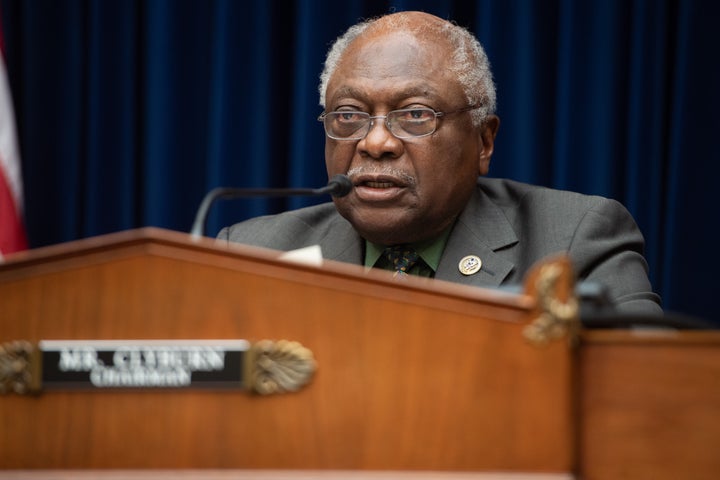
Filling In The ‘Medicaid Gap’
What’s the need? Several million Americans living below or just above the poverty line have no access to insurance, because they live in a group of mostly Southern states where Republican lawmakers have refused to expand Medicaid eligibility, even though the federal government would cover most of the cost. These people fall into what’s come to be known as the “Medicaid gap.”
What’s the policy? In these states, the federal government would now take on the full cost of insuring these people either by standing up a new federally run insurance program that would offer them coverage or giving them subsidies to get private insurance through HealthCare.gov.
What could it cost? $400 billion? This is another difficult one to estimate, because so much depends on still-unresolved policy design questions.
Who’s pushing it? This idea got a big boost from the two Georgia Democratic senators (who campaigned on bringing Medicaid expansion to their state) and then from House Majority Whip James Clyburn (D-S.C.). That weighed heavily with Biden, who is close with Clyburn and by all accounts is aghast that Republican officials in these states continue to block expansion.
What could happen? Dollar for dollar, this initiative may do more to reach the financially vulnerable ― and to reduce racial disparities ― than any other initiative. But the politics are complex because so many states have already expanded. Officials in those states may not like the idea of the federal government picking up the whole tab, rather than simply most of it, in other states. Some might even decide to drop coverage and let the feds take over.
A politically viable proposal would likely have to include financial incentives, maybe including some benefits for states that already expanded. That makes the whole initiative more expensive ― maybe a lot more expensive.

Lowering The Medicare Age
What’s the need? Older Americans approaching retirement frequently struggle with the cost of their medical care, because they are starting to have the medical problems associated with age but are still on private insurance plans whose coverage is in many ways weaker than Medicare’s.
What’s the plan? Democrats want to allow older Americans to opt into Medicare before retirement, by reducing the eligibility age to 60, 55 or even 50.
What it might cost: It’s hard to say what this would cost, because it depends on not just exactly where that eligibility age ends up (60? 55? 50?) but also on the specific financing. What would premiums be and who would pay them? Also it would depend on interactions with employer insurance, since so many people in these age categories would still have jobs that offer benefits.
Who’s pushing it? This is also a progressive priority, with the same set of champions as other Medicare changes.
What could happen? This appears to be the least likely idea on the agenda to make it into final legislation. Doctors and hospitals would fight hard, because Medicare pays them less than private insurance. Effects on employer insurance would be a source of controversy.
The need also isn’t as urgent as it was before the Affordable Care Act improvements, since the 50-something and 60-something Americans struggling most with costs were those buying coverage through HealthCare.gov and the exchanges.
Still, progressives keep talking about it and the idea is quite popular, in part because it’s simple to explain and understand. It’s not crazy to think Sanders, Jayapal and their allies would find some way to get some version of the idea into a final spending bill.
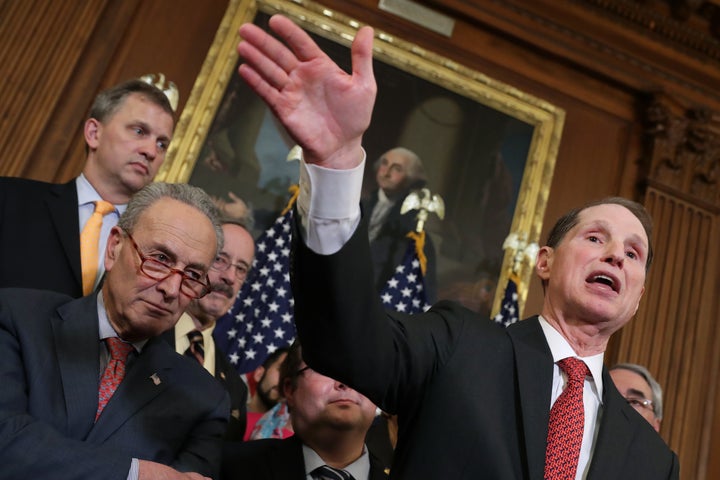
Forcing Down The Price Of Drugs
What’s the need? America pays dramatically more for name-brand prescription drugs than any other developed country. This inflates costs for government and private insurers, and sticks individual consumers with pharmacy bills they frequently can’t pay.
What’s the plan? Give the federal government some kind of power to negotiate prices directly with manufacturers, just like the governments of other developed countries do, and then extend those negotiated prices to the private sector so that employers, insurers and individuals can all take advantage of them.
What it might cost? Done properly, this costs nothing. In fact, it saves money ― a lot of money ― because it would reduce what government programs spend on drugs.
An estimate of H.R. 3, the legislation House Democrats passed in 2019 and hope can be the basis for legislation now, suggested that price negotiation would free up more than $450 billion. And that’s on top of separate savings, approaching $200 billion, that the federal government could realize by reversing a regulatory change on drugs that the Trump administration enacted.
Who’s pushing it: Pelosi wants this badly. So do progressives like Jayapal and Sanders, and Senate Finance Chairman Ron Wyden (R-Ore.). Another, unlikely source of support are some vulnerable, frequently conservative Democrats who know this is popular with constituents. A coalition of outside groups, including AARP and progressive groups like Social Security Works, are also pushing hard.
What could happen: This is the X-factor of the debate, because those savings from drug spending free up dollars that can ― and would ― go to other health initiatives. The need for that money, plus the idea’s deep, well-established popularity with the public, mean this kind of legislation has a better chance of passing than ever before.
Still, the pharmaceutical industry has possibly the most powerful lobbying operation in Washington. It’s especially influential with senators from Delaware and New Jersey, two states where it has a large presence. And Democrats have no votes to spare.
This is another idea that’s easy to divide up or downsize. H.R. 3 limited the number of drugs subject to negotiation; that number could get smaller. It set a price ceiling based on what other countries pay; that ceiling could be higher. And so on. But of course every dollar of savings that Democrats give up on prescription drugs is a dollar not available for other purposes.
